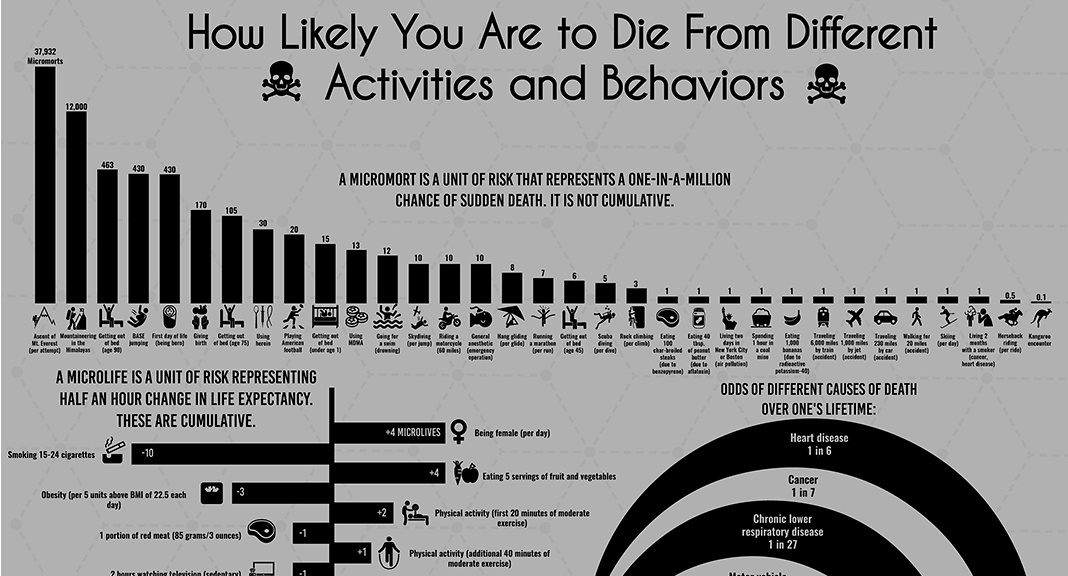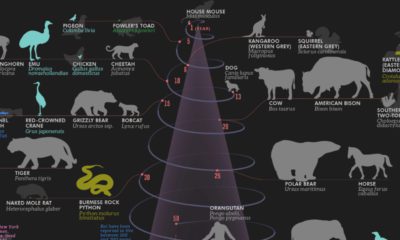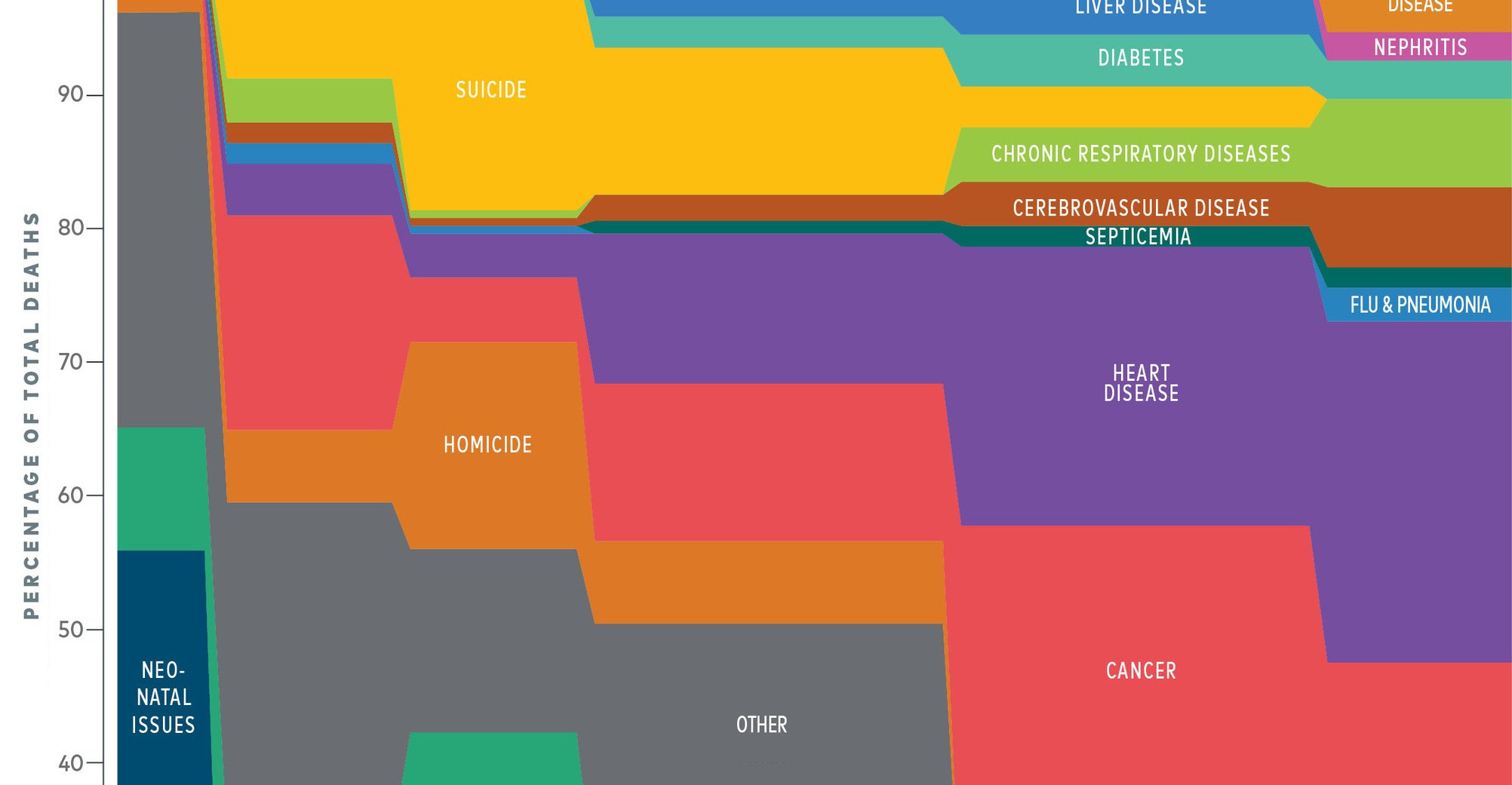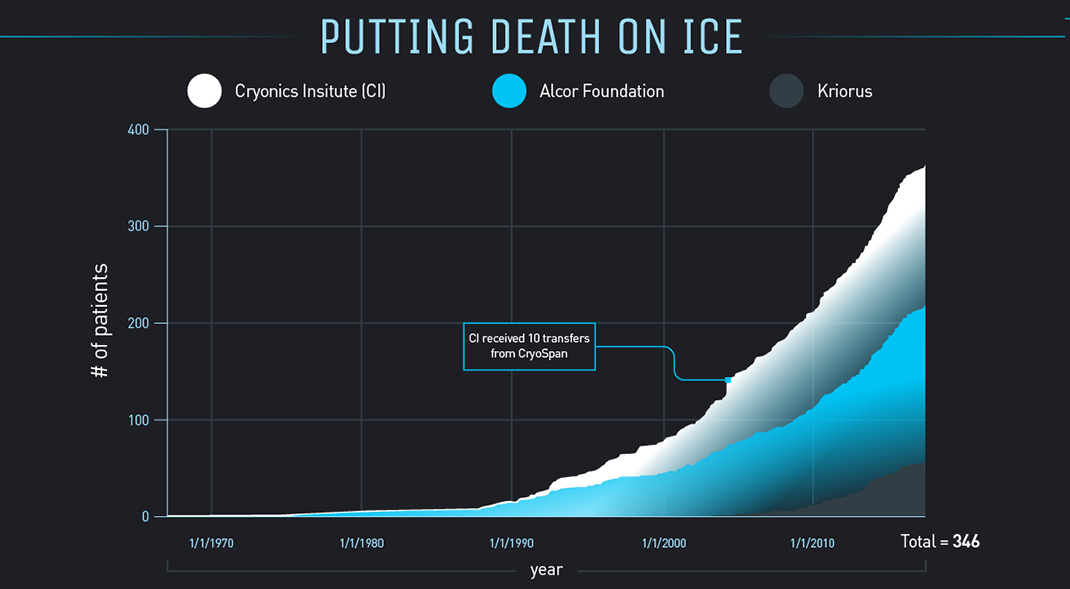Misc
Crunching the Numbers on Mortality
View a high resolution version of this graphic.
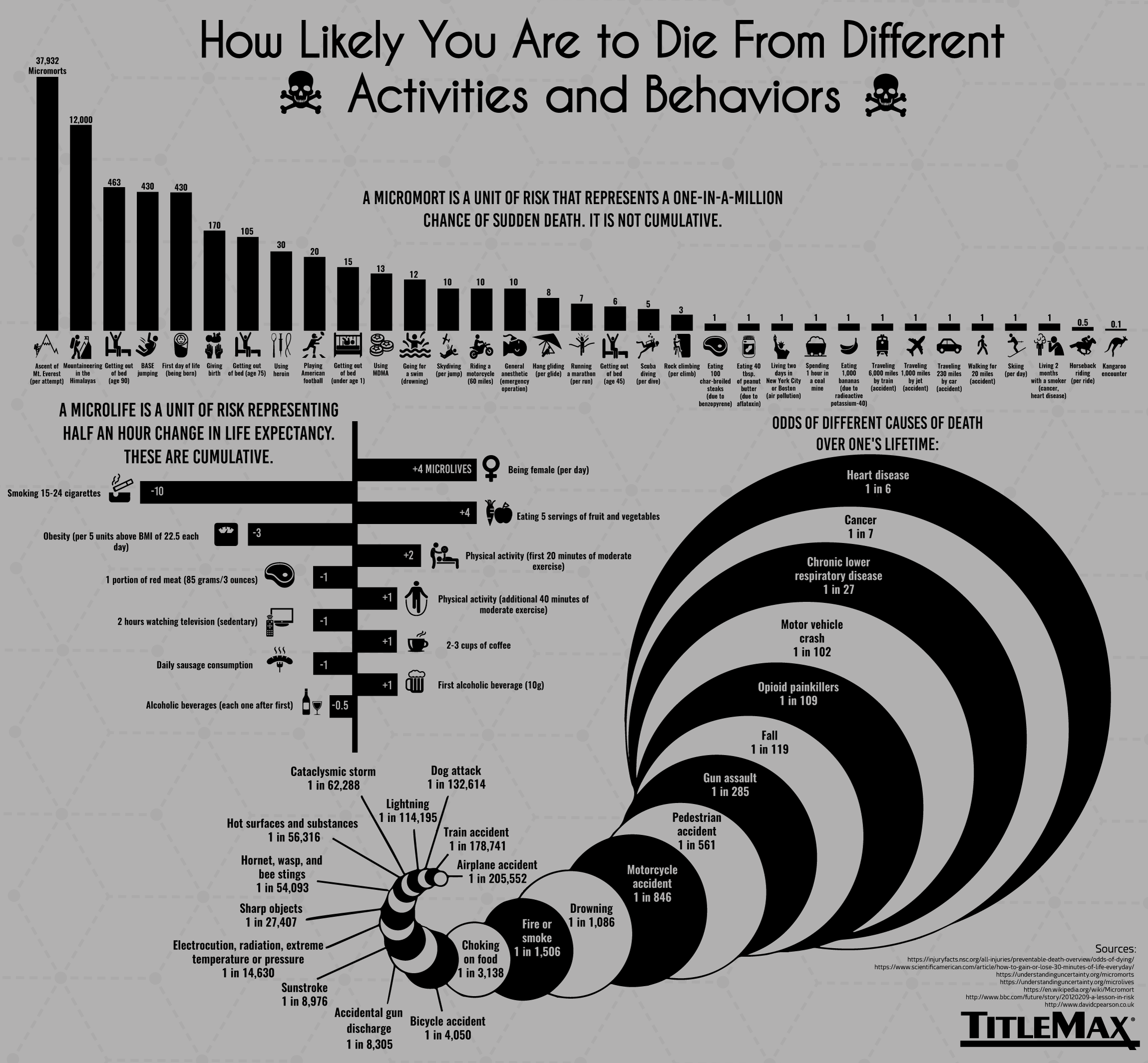
Crunching the Numbers on Mortality
View the high resolution version of today’s graphic by clicking here.
One of the key traits that make human beings unique on planet Earth is that we’re aware of our own mortality.
Scientific advances have given us insight into which behaviors may prolong life, and which activities carry the greatest risk of death. Naturally, there have been some unique attempts to create a unified structure around risk and benefit, and to quantify every aspect of the human lifespan.
As today’s graphic from TitleMax demonstrates, even when we’re thinking about death, the human desire to codify the world around us is alive and well.
Mortality Units
Certain events – such as a parachute failing to open or being hit by a meteor – have an easily quantifiable effect on life, but how do we measure the riskiness of day-to-day habits and situations? This is where a unique unit of measurement, micromorts, comes into play.
This concept, invented by renowned decision analyst Ronald A. Howard, helps compare any number of potentially lethal risks. One micromort equals a one in a million chance of sudden death. Here’s the riskiness of various activities measured in micromorts:
| Activity | Micromorts |
|---|---|
| Ascending Mount Everest | 37,932 |
| Getting out of bed (Age 90) | 463 |
| Being born (first day of life) | 430 |
| Giving birth | 170 |
| Playing Football | 20 |
| Riding a motorcycle | 10 |
| Running a marathon | 7 |
| Rock climbing | 3 |
| Travelling 6,000 miles by train | 1 |
| Travelling 230 miles by car | 1 |
Life Units
The average person, by the time they reach adulthood, will live approximately one million half-hours. Those 30 minute units are known as microlives.
The microlife concept was invented by professor David Spiegelhalter as a way to measure the consequences of various behaviors. For example, 20 minutes of physical activity earns us two microlives, while watching TV for two hours subtracts one microlife.
This measurement extends beyond nutrition and eating habits. Simply living in a modern era earns us an additional 15 microlives per day compared to those who lived a century earlier.
Casting the die on how we’ll die
How will the estimated 353,000 humans that will be born today eventually meet their end? This was the thought experiment conducted by Reddit user, Presneeze.
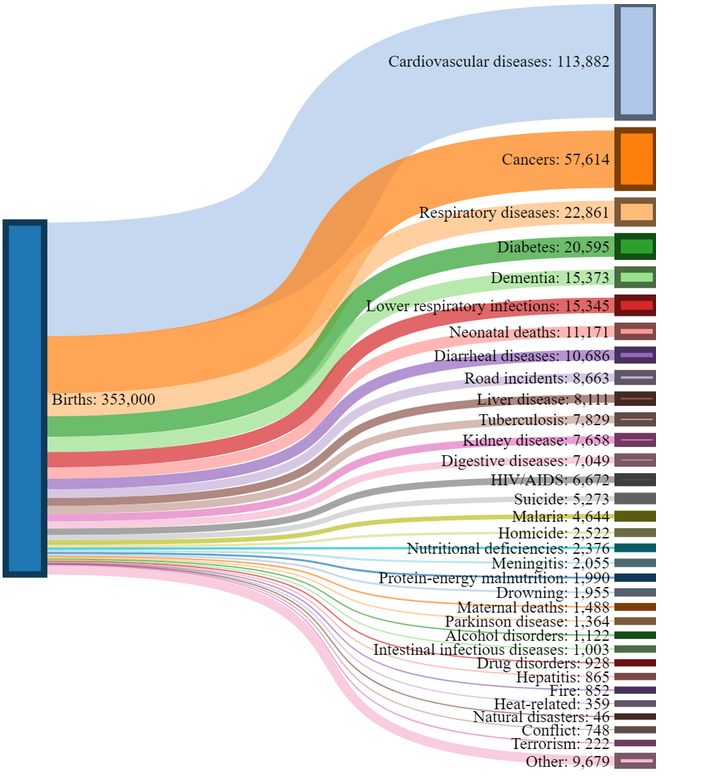
While our focus is often drawn to people who meet their end in spectacular and tragic ways, the vast majority of humanity will succumb to conditions such as heart disease and cancer.
Geography can play a big role in shifting these odds:
- In the United States, which is grappling with an opioid addiction crisis, there is a 1-in-96 chance of dying from a drug overdose.
- Diarrheal diseases may not be on the radar of most people living in first world countries, but in developing regions, they remain a leading cause of preventable death – particularly for children.
- In Russia, the odds are 1-in-4 that a man will not live beyond 55 years. The main culprit? Vodka.
On a long enough time line, the survival rate for everyone drops to zero.
–Chuck Palahniuk
VC+
VC+: Get Our Key Takeaways From the IMF’s World Economic Outlook
A sneak preview of the exclusive VC+ Special Dispatch—your shortcut to understanding IMF’s World Economic Outlook report.

Have you read IMF’s latest World Economic Outlook yet? At a daunting 202 pages, we don’t blame you if it’s still on your to-do list.
But don’t worry, you don’t need to read the whole April release, because we’ve already done the hard work for you.
To save you time and effort, the Visual Capitalist team has compiled a visual analysis of everything you need to know from the report—and our VC+ Special Dispatch is available exclusively to VC+ members. All you need to do is log into the VC+ Archive.
If you’re not already subscribed to VC+, make sure you sign up now to access the full analysis of the IMF report, and more (we release similar deep dives every week).
For now, here’s what VC+ members get to see.
Your Shortcut to Understanding IMF’s World Economic Outlook
With long and short-term growth prospects declining for many countries around the world, this Special Dispatch offers a visual analysis of the key figures and takeaways from the IMF’s report including:
- The global decline in economic growth forecasts
- Real GDP growth and inflation forecasts for major nations in 2024
- When interest rate cuts will happen and interest rate forecasts
- How debt-to-GDP ratios have changed since 2000
- And much more!
Get the Full Breakdown in the Next VC+ Special Dispatch
VC+ members can access the full Special Dispatch by logging into the VC+ Archive, where you can also check out previous releases.
Make sure you join VC+ now to see exclusive charts and the full analysis of key takeaways from IMF’s World Economic Outlook.
Don’t miss out. Become a VC+ member today.
What You Get When You Become a VC+ Member
VC+ is Visual Capitalist’s premium subscription. As a member, you’ll get the following:
- Special Dispatches: Deep dive visual briefings on crucial reports and global trends
- Markets This Month: A snappy summary of the state of the markets and what to look out for
- The Trendline: Weekly curation of the best visualizations from across the globe
- Global Forecast Series: Our flagship annual report that covers everything you need to know related to the economy, markets, geopolitics, and the latest tech trends
- VC+ Archive: Hundreds of previously released VC+ briefings and reports that you’ve been missing out on, all in one dedicated hub
You can get all of the above, and more, by joining VC+ today.
-

 Energy1 week ago
Energy1 week agoThe World’s Biggest Nuclear Energy Producers
-

 Money2 weeks ago
Money2 weeks agoWhich States Have the Highest Minimum Wage in America?
-

 Technology2 weeks ago
Technology2 weeks agoRanked: Semiconductor Companies by Industry Revenue Share
-

 Markets2 weeks ago
Markets2 weeks agoRanked: The World’s Top Flight Routes, by Revenue
-

 Countries2 weeks ago
Countries2 weeks agoPopulation Projections: The World’s 6 Largest Countries in 2075
-

 Markets2 weeks ago
Markets2 weeks agoThe Top 10 States by Real GDP Growth in 2023
-

 Demographics2 weeks ago
Demographics2 weeks agoThe Smallest Gender Wage Gaps in OECD Countries
-

 United States2 weeks ago
United States2 weeks agoWhere U.S. Inflation Hit the Hardest in March 2024

